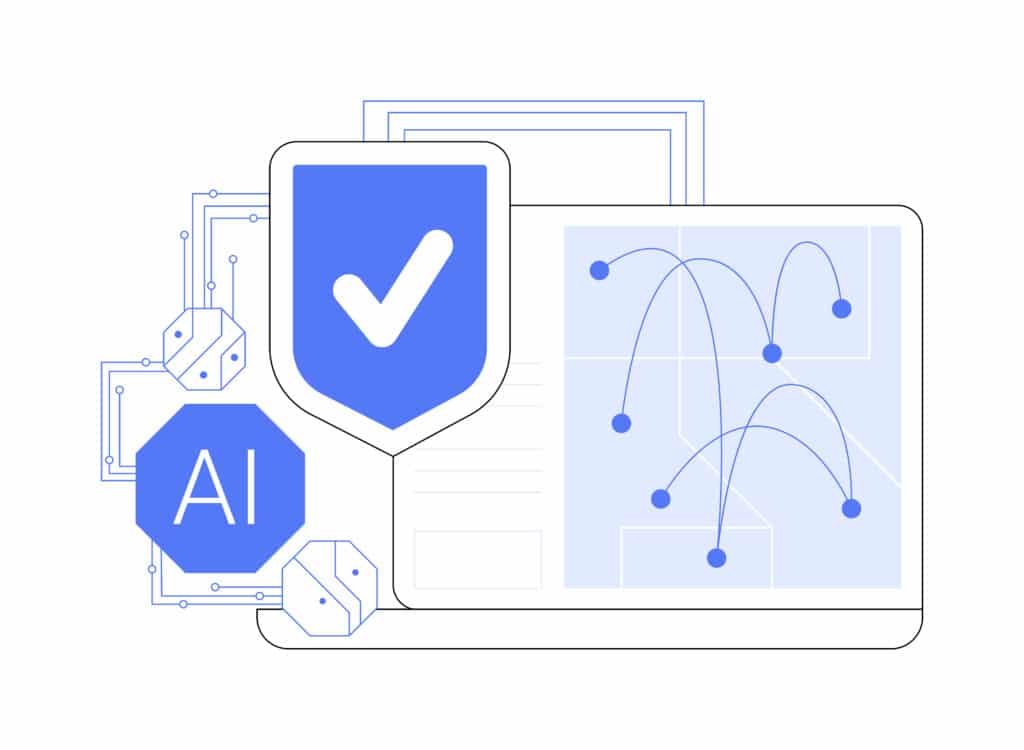Keeping complex AI systems running smoothly can seem like managing too many tasks at once. From unexpected slowdowns to increasing costs, even minor issues can grow into significant challenges if ignored.
Business owners and IT managers face the same question: how do you maintain control over it all?
AI-supported infrastructure monitoring offers a fresh perspective. With tools designed for tracking latency, usage, and performance data in real time, businesses identify problems before they escalate.
In this blog post, you’ll discover what AI monitoring entails, which tools are most effective, and practical advice to enhance your system’s reliability.
Stick around to find solutions that truly deliver!

What is AI and LLM Infrastructure Monitoring?
AI and LLM infrastructure monitoring observes the status, performance, and efficiency of systems running artificial intelligence models. Businesses depend on it to detect issues like slow response times or unusual behavior in machine learning networks.
Monitoring ensures AI applications remain dependable, secure, and compliant with regulatory standards. For businesses seeking personalized support, the experts at Nortec can help align AI observability with broader IT management goals.
This process analyzes system data such as resource consumption and token usage while managing expenses efficiently. Sophisticated tools identify bottlenecks in cloud infrastructures or data pipelines that support generative AI tasks.
Routine evaluations enhance decision-making for enterprise applications by avoiding downtime or costly problem-solving later.

Key Metrics for Monitoring AI and LLM Systems
Tracking performance indicators keeps AI systems functioning efficiently. Understanding what to monitor helps you address issues before they escalate.
Latency and Response Times
Latency measures the time it takes for a system to respond after receiving a request. Faster response times are critical for AI and LLM systems, especially when handling large-scale enterprise applications.
Slower latency can frustrate users and create obstacles in workflows in managed IT services.
AI models process high volumes of data, which can sometimes lead to delayed responses. Continuous monitoring helps identify delays caused by network issues or server overloads. Cloud computing platforms often offer tools that help track response times across different environments, ensuring more efficient operation.
Token Usage and Cost Management
Tracking token usage helps manage AI model expenses. Large language models handle text through tokens, which can accumulate and drive up costs. Monitoring identifies inefficient queries or excessive inputs to prevent overspending.
“Small changes make big waves. Simplify prompts to save money,” as IT experts often say. Recognizing how token limits affect pricing allows for improved resource management. Resources like OSG’s managed IT guide for Naperville firms offer deeper insight into balancing AI infrastructure costs while maintaining performance.
Managing costs aligns effectively with the observability tools discussed next.

Tools and Platforms for AI Observability
Monitoring tools help track AI systems like a hawk, keeping performance issues at bay. Some platforms blend well with existing setups, making troubleshooting less of a headache.
OpenTelemetry Integration
OpenTelemetry gathers performance data across AI systems effectively. It tracks metrics like latency, throughput, and errors in one centralized place. Businesses can identify bottlenecks faster and improve AI model efficiency progressively.
This open-source tool works with various observability platforms. Managed IT teams can integrate it into cloud or on-premises setups easily. Supporting languages like Python and JavaScript makes adoption straightforward for developers while meeting enterprise needs.
Paid and Open-Source Monitoring Tools
Monitoring tools help track AI and LLM infrastructure. Some require payment, while others are open-source and free to use. Here’s a comparison for easier understanding:
| Tool Name | Type | Main Features | Cost Range |
| Datadog | Paid | Real-time AI monitoring, dashboards, and alerts. | Starts at $15/user monthly. |
| Grafana | Open-Source | Custom dashboards, data visualization, plugin support. | Free (Paid plans available). |
| Prometheus | Open-Source | Metric collection, time-series database, pull-based model. | Free. |
| AppDynamics | Paid | AI-based insights, anomaly detection, cloud tracking. | Custom pricing based on needs. |
| New Relic | Paid | Full observability, AI integrations, alert systems. | Free for 100GB monthly, then $0.30/GB. |
| Elasticsearch | Open-Source | Log management, search functions, analysis tools. | Free (Self-hosted). |
| Dynatrace | Paid | AI performance tracking, end-to-end monitoring. | Starts at $69/month per host. |
| Zabbix | Open-Source | Detailed monitoring, alerting, customizable templates. | Free. |
Both types have strengths. Paid tools often provide advanced support and integrations. Open-source options are budget-friendly but may need technical expertise.
Best Practices for Effective LLM Observability
Monitor your system performance carefully to identify issues before they escalate. Create feedback systems that adjust and improve with each interaction.
Real-Time Monitoring Systems
Real-time monitoring tracks AI and LLM infrastructure as issues arise. It identifies problems like latency spikes or high token usage promptly. Businesses can address challenges before they escalate into larger disruptions.
This approach ensures performance, reduces service downtime, and keeps costs stable.
AI observability tools such as OpenTelemetry can work with real-time systems smoothly. These platforms send instant alerts for unusual activity or system bottlenecks. Immediate data access means IT teams don’t waste time searching for root causes.
Next, we’ll discuss the role of feedback loops in maintaining continuous improvement!

Feedback Loops for Continuous Improvement
Tracking data in real-time establishes a base for feedback loops. These loops help improve AI and LLM systems over time. They gather user inputs, examine patterns, and identify areas for improvement.
For instance, if response times slow during high traffic, logs can identify system inefficiencies.
Feedback mechanisms also support cost management strategies. Observing token usage reveals trends related to inefficient processes or excessive queries. Modifying prompts based on this feedback improves outputs while reducing unnecessary costs.
Regular updates ensure your infrastructure remains responsive under new demands.
Conclusion
AI and LLM monitoring is more than just tracking performance. It helps identify issues, control costs, and enhance system reliability. With the right tools and practices, businesses can resolve problems more efficiently and make more informed decisions.
Staying ahead ensures these systems continue operating effectively while meeting enterprise needs.
- 3shares
- Facebook0
- Pinterest0
- Twitter3
- Reddit0













